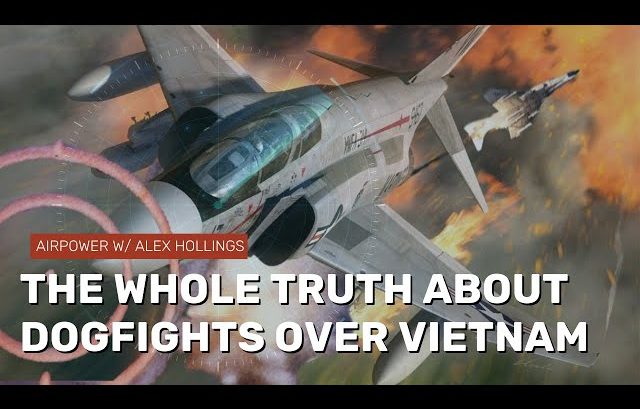With advanced new fighters being introduced, it seems clear that the US is moving further away from dogfighting platforms, doubling down on beyond-visual range engagements. But for many, it feels like Déjà vu.
After all, didn’t the Americans already learn this lesson in Vietnam?
A Thing of the Past
America prizes air superiority in its approach to warfare. But there’s a growing sentiment within the defense apparatus that dogfights or air-to-air combat are a thing of the past.
Advanced sensors and highly efficient air-to-air weapons that can reach beyond visual range targets all suggest that air combat will take place at longer and longer distances in the future. Making the need for aerobatic air superiority planes a thing of the past.
First Troubles
America’s first troubles over Vietnam began before the first shots of the conflict were ever fired, and even continued well into fighting. Some of the issues were technological, and others were bureaucratic, even political.
The thing is, America lost aircraft and pilots over Vietnam not because of a single incorrect conclusion such as dogfights are over. Instead, it was due to a litany of errors that were largely made with the best of intentions.
War over Vietnam
During this particular conflict, American fighter pilots experienced a significant downturn and kill-to-loss ratios as compared to the Korean War.
Some even argue that US pilots over Korea came home with a 10 to 1 kill ratio, or 10 enemy fighters shot down for one US fighter lost. However, modern historians believe this to be inflated. Real figures seem closer to a still impressive 8 to 1 instead.
During the Vietnam War, however, that ratio dropped to less than 1 to 1. It means that during some stretches of this fight, the North Vietnamese were shooting down more American fighters than they were losing.
America’s Vietnam Dogfighting Failures
It wasn’t long before those dogfights put pilots into some pretty bad situations as they tried to battle notably slower and less advanced MiG-15s, 17s, 19s, and 21s. The MiG’s ability to take tight turns and orient their noses at the more agile American jets before they could swing around gave them an excellent opportunity to score gun kills.
To make matters worse, America’s missiles didn’t always work as advertised, causing pilots valuable opportunities to down their opponents when they had the chance.
As explained by Benjamin Lambeth in his book published by Cornell studies, America’s emphasis on winning the nuclear war against the Soviet Union, fielding quick-moving fighters that were designed to intercept Soviet planes at long distances, or to carry heavy nuclear payloads all left American pilots a disadvantage against harder cornering and slower platforms like the MiG 17 and 21.
At a Disadvantage
But this disadvantage extended way beyond missing guns and turn rate. The F4 Phantom 2 had its strengths, but provided poor visibility to the rear from inside the cockpit, making it hard to keep an eye on slow-moving opponents.
To make matters worse, its J79 engines that could propel that plane well past Mach 2 were known to create a heavy smoke trail when not flying under afterburner. The contemporary report suggests that the smoke trail left by the F4’s engines would extend as far as 30 miles, giving Vietnamese fighters and crews on the ground enough opportunity to spot and track the American jets as they flew through contested airspace.



